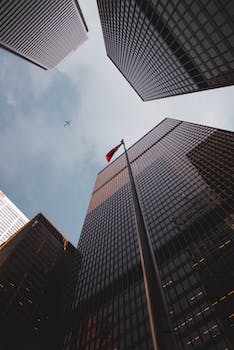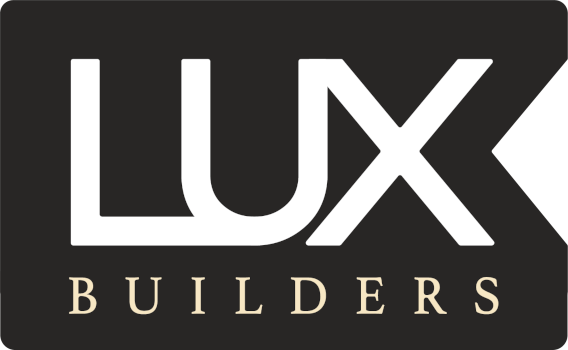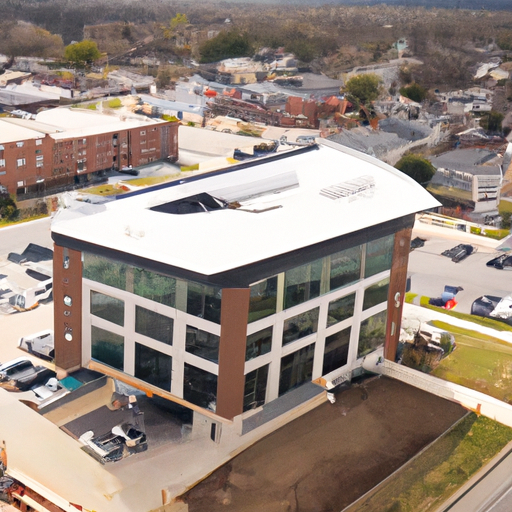Exploring North Carolina’s Modern Complexes: Architectural Marvels and Urban Planning
North Carolina, a state known for its rich history, diverse culture, and picturesque landscapes, has recently been experiencing a surge in the development of modern complexes. These architectural marvels are not only transforming the skyline of cities like Charlotte and Raleigh but are also redefining the way people live, work, and interact in urban environments. As the state continues to grow and attract new residents, the rise of these modern complexes is a testament to North Carolina’s commitment to innovation, sustainability, and urban planning.
One of the driving forces behind the development of modern complexes in North Carolina is the state’s booming economy. With a diverse range of industries, including technology, finance, and healthcare, North Carolina has become a hub for innovation and growth. This economic prosperity has led to an influx of new residents, creating a demand for modern, high-quality housing and commercial spaces. In response, developers have been quick to capitalize on this demand, constructing state-of-the-art complexes that cater to the needs of the growing population.
These modern complexes are characterized by their innovative architectural designs, which often incorporate sustainable features and cutting-edge technology. For example, many of these buildings are designed to be energy-efficient, utilizing solar panels, green roofs, and advanced insulation techniques to reduce their environmental impact. Additionally, these complexes often feature smart technology, such as automated lighting and temperature control systems, which not only improve the comfort of residents but also contribute to energy conservation efforts.
Another defining characteristic of modern complexes in North Carolina is their emphasis on mixed-use development. This approach to urban planning involves the integration of residential, commercial, and recreational spaces within a single complex, creating a vibrant and dynamic environment where people can live, work, and play. This not only promotes a sense of community among residents but also encourages walkability and reduces the need for cars, contributing to a more sustainable urban lifestyle.
One notable example of a modern complex in North Carolina is the RailYard South End in Charlotte. This mixed-use development features two eight-story buildings, offering a combination of office space, retail, and residential units. The complex also includes a central plaza, which serves as a gathering space for community events and outdoor activities. The RailYard’s innovative design and emphasis on sustainability have earned it numerous accolades, including the 2019 Charlotte Business Journal Heavy Hitters Commercial Real Estate Award for Best Mixed-Use Development.
Another example is the Smoky Hollow development in Raleigh, which is currently under construction. This ambitious project aims to transform a previously underutilized industrial area into a vibrant, mixed-use community. Once completed, Smoky Hollow will feature residential units, office space, retail, and a public park, all connected by pedestrian-friendly streets and greenways. The development’s focus on sustainability and walkability has garnered significant interest from both local residents and businesses, making it a prime example of the potential of modern complexes in North Carolina.
In conclusion, the rise of modern complexes in North Carolina is a reflection of the state’s commitment to innovation, sustainability, and urban planning. These architectural marvels are not only transforming the skylines of cities like Charlotte and Raleigh but are also redefining the way people live, work, and interact in urban environments. As North Carolina continues to grow and attract new residents, it is likely that the development of modern complexes will continue to shape the state’s urban landscape for years to come.
The Impact of Modern Complex Developments on North Carolina’s Economy and Lifestyle

The rise of modern complexes in North Carolina has been nothing short of remarkable. Over the past few years, the state has witnessed a significant increase in the number of mixed-use developments, which combine residential, commercial, and recreational spaces into a single, cohesive unit. These modern complexes have not only transformed the landscape of North Carolina’s cities and towns but have also had a profound impact on the state’s economy and the lifestyle of its residents.
One of the most significant ways in which modern complexes have impacted North Carolina’s economy is by attracting new businesses and investments to the state. The presence of these developments has made the state more appealing to companies looking to set up shop or expand their operations. This is because mixed-use developments offer a range of benefits to businesses, including increased foot traffic, a diverse customer base, and the opportunity to be part of a thriving community. As a result, North Carolina has seen a surge in economic activity, with new businesses opening their doors and existing ones expanding their operations.
In addition to attracting new businesses, modern complexes have also played a crucial role in boosting North Carolina’s tourism industry. The state has long been a popular destination for tourists, thanks to its beautiful beaches, picturesque mountains, and rich history. However, the rise of modern complexes has added a new dimension to the state’s appeal, offering visitors a unique blend of urban sophistication and small-town charm. Tourists are drawn to these developments for their shopping, dining, and entertainment options, as well as the convenience of having everything they need within walking distance. This has led to an increase in visitor numbers and spending, further bolstering the state’s economy.
The impact of modern complexes on North Carolina’s economy is not limited to the direct benefits they provide to businesses and the tourism industry. These developments have also created a ripple effect throughout the state, generating new jobs and spurring growth in related industries. For example, the construction of modern complexes has led to increased demand for building materials, architectural services, and skilled labor, creating new employment opportunities for North Carolina residents. Furthermore, the presence of these developments has stimulated growth in the retail, hospitality, and service sectors, as businesses within the complexes require a range of goods and services to operate.
Beyond their economic impact, modern complexes have also had a profound effect on the lifestyle of North Carolina residents. These developments have redefined the way people live, work, and play in the state, offering a more convenient and connected way of life. Residents of modern complexes enjoy easy access to a range of amenities, including shops, restaurants, and recreational facilities, all within walking distance of their homes. This not only saves time and reduces the need for car travel but also promotes a healthier, more active lifestyle.
Moreover, modern complexes have fostered a sense of community among residents, who are more likely to interact with their neighbors and participate in local events and activities. This has led to the creation of vibrant, thriving communities that are both socially and economically sustainable. In addition, the rise of modern complexes has encouraged the development of more environmentally friendly building practices and technologies, as developers strive to create sustainable, energy-efficient spaces that minimize their impact on the environment.
In conclusion, the rise of modern complexes in North Carolina has had a significant impact on the state’s economy and the lifestyle of its residents. These developments have attracted new businesses and investments, boosted the tourism industry, and generated new jobs and growth in related sectors. Furthermore, they have transformed the way people live, work, and play in the state, promoting a more convenient, connected, and sustainable way of life. As North Carolina continues to embrace the trend of modern complex developments, it is poised to reap the benefits of this innovative approach to urban living for years to come.
Sustainable Living in North Carolina: A Look at Eco-Friendly Modern Complexes
The rise of modern complexes in North Carolina is a testament to the state’s commitment to sustainable living and eco-friendly practices. As the population continues to grow and urbanization expands, the need for innovative and environmentally responsible housing solutions becomes increasingly important. In response to this demand, developers and architects in North Carolina have embraced the concept of sustainable living and are creating modern complexes that prioritize energy efficiency, resource conservation, and a reduced environmental impact.
One of the key features of these modern complexes is their focus on energy efficiency. By incorporating advanced technologies and design principles, these buildings are able to minimize their energy consumption and reduce their carbon footprint. For example, many of these complexes utilize solar panels to generate electricity, which not only reduces their reliance on fossil fuels but also lowers their overall energy costs. Additionally, these buildings often incorporate energy-efficient appliances, lighting, and HVAC systems, which further contribute to their overall sustainability.
Another important aspect of sustainable living in North Carolina’s modern complexes is their emphasis on water conservation. With water scarcity becoming an increasingly pressing issue, it is essential that new developments take steps to minimize their water usage. To achieve this, many modern complexes incorporate features such as low-flow fixtures, rainwater harvesting systems, and drought-tolerant landscaping. These measures not only help to conserve water but also reduce the strain on local water resources and infrastructure.
In addition to energy efficiency and water conservation, modern complexes in North Carolina also prioritize waste reduction and recycling. Many of these developments include on-site recycling facilities, making it easy for residents to dispose of their recyclables in an environmentally responsible manner. Furthermore, these complexes often incorporate sustainable building materials, such as reclaimed wood and recycled metal, which not only reduces their environmental impact but also contributes to a unique and contemporary aesthetic.
One of the most notable examples of sustainable living in North Carolina is the Greenbridge development in Chapel Hill. This mixed-use complex, which includes residential, retail, and office spaces, was designed with sustainability in mind and has received numerous awards for its eco-friendly features. Some of the key elements of Greenbridge’s sustainable design include a green roof, solar panels, energy-efficient windows, and a rainwater harvesting system. Additionally, the complex was constructed using locally sourced and recycled materials, further reducing its environmental impact.
Another example of a modern complex in North Carolina that prioritizes sustainable living is the Durham.ID development in Durham. This innovative project, which includes residential, office, and retail spaces, was designed to promote walkability and reduce the need for car travel. By incorporating features such as pedestrian-friendly streetscapes, ample bike storage, and easy access to public transportation, Durham.ID encourages residents to adopt more sustainable modes of transportation.
In conclusion, the rise of modern complexes in North Carolina is a reflection of the state’s commitment to sustainable living and eco-friendly practices. By prioritizing energy efficiency, water conservation, and waste reduction, these developments are helping to create a more sustainable future for North Carolina and its residents. As the demand for environmentally responsible housing solutions continues to grow, it is likely that we will see even more innovative and sustainable modern complexes emerge throughout the state.
Q&A
Question 1: What factors contributed to the rise of modern complexes in North Carolina?
Answer: The factors that contributed to the rise of modern complexes in North Carolina include population growth, economic development, urbanization, and the demand for modern amenities and housing options.
Question 2: How has the rise of modern complexes impacted the economy of North Carolina?
Answer: The rise of modern complexes has positively impacted the economy of North Carolina by creating jobs in construction, property management, and related industries, attracting new businesses and residents, and increasing property values and tax revenues.
Question 3: What are some examples of modern complexes in North Carolina?
Answer: Some examples of modern complexes in North Carolina include the Research Triangle Park, a high-tech research and development hub; the American Tobacco Campus in Durham, a mixed-use development with offices, restaurants, and entertainment venues; and the Ballantyne Corporate Park in Charlotte, a large office park with retail and residential components.
Conclusion
In conclusion, the rise of modern complexes in North Carolina signifies a period of significant growth and development in the state. This growth is characterized by the construction of innovative residential, commercial, and mixed-use properties that cater to the evolving needs of the population. These modern complexes have contributed to the economic expansion, urbanization, and improved quality of life for residents in North Carolina.


